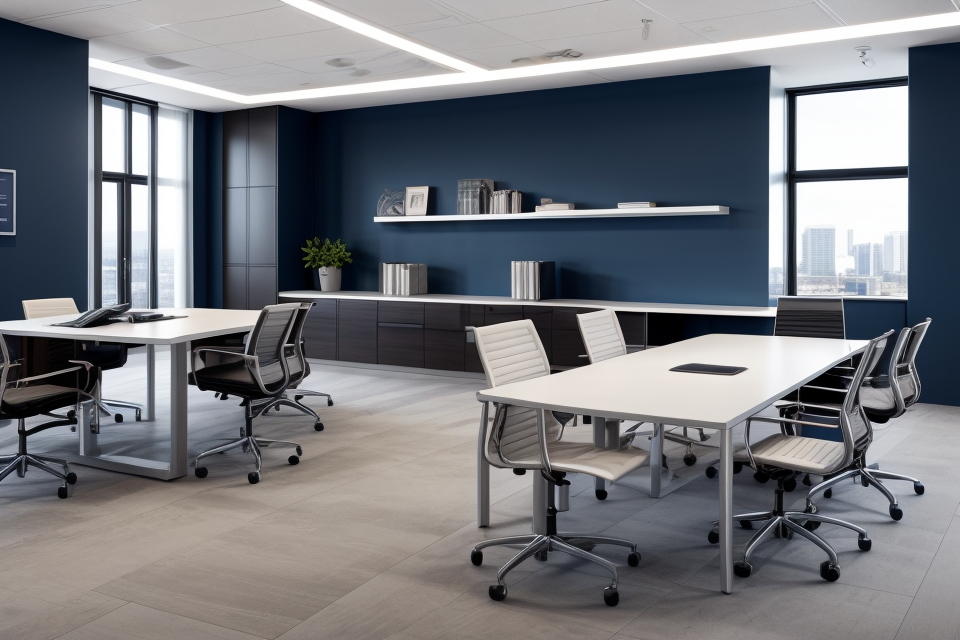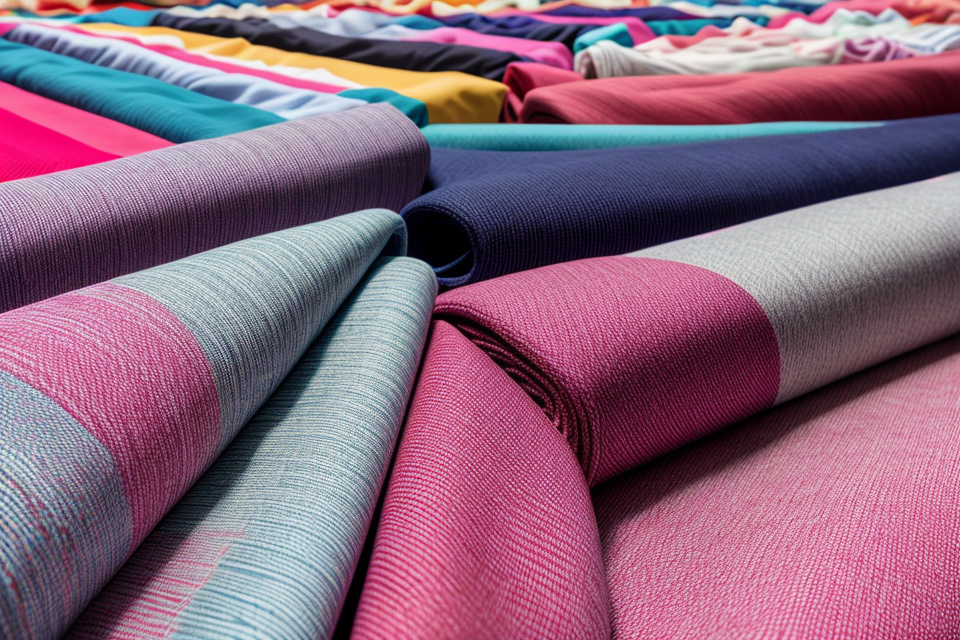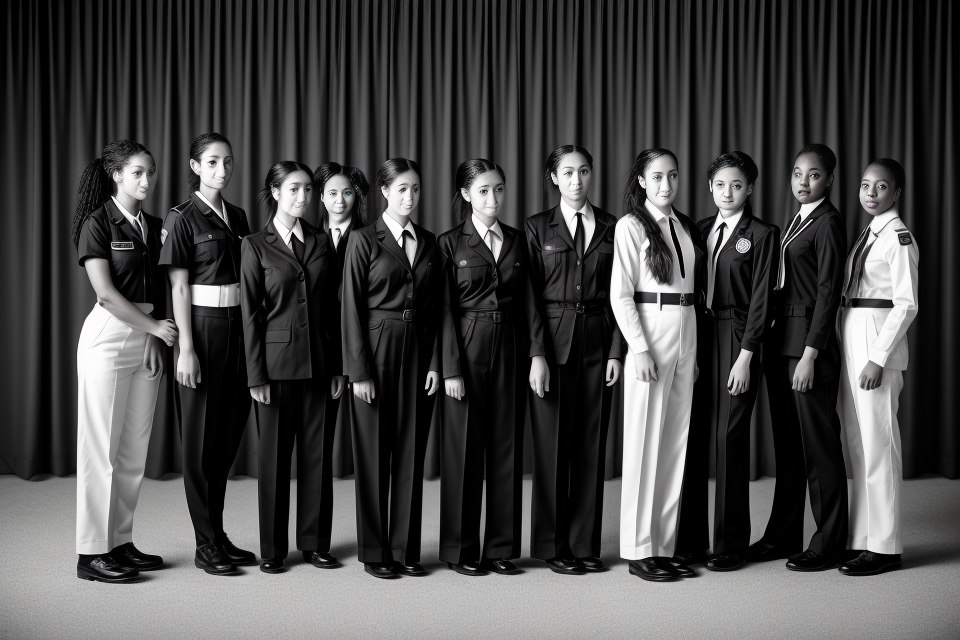
Choosing the right uniform material is a crucial decision for any business or organization. Not only does it affect the appearance of your staff, but it also impacts their comfort and functionality. With so many options available, it can be overwhelming to decide which material is best for your needs. In this article, we will provide you with a comprehensive guide on how to choose the right uniform material for your business or organization. We will discuss the different factors to consider, such as durability, comfort, and cost, and provide tips on how to make the best decision for your specific needs. Whether you’re in the hospitality industry or a sports team, we’ve got you covered. So, let’s dive in and explore the world of uniform materials!
Factors to Consider When Choosing Uniform Material
Durability
Importance of Durability in Uniform Material
When it comes to choosing the right uniform material for your business or organization, durability should be one of the top considerations. Uniforms are often worn on a daily basis, and they can be exposed to a variety of environmental factors, such as heat, moisture, and chemicals, which can cause wear and tear over time. By choosing a durable uniform material, you can ensure that your uniforms will last longer and require fewer replacements, which can save you time and money in the long run.
Types of Fabrics That Are Durable
There are several types of fabrics that are known for their durability, including:
- Polyester: This synthetic fabric is known for its strength and resistance to wrinkles, making it a popular choice for uniforms that need to withstand frequent wear and washing.
- Nylon: This synthetic fabric is strong and lightweight, making it a good choice for uniforms that need to be comfortable and flexible, such as those worn by athletes or workers who are on their feet for long periods of time.
- Cotton: While cotton is not as durable as some synthetic fabrics, it is still a popular choice for uniforms due to its softness and breathability.
Factors That Affect the Durability of Fabrics
In addition to the type of fabric, there are several other factors that can affect the durability of uniform material, including:
- Weave: Uniform fabrics that are woven tightly are generally more durable than those that are woven loosely.
- Finish: Uniform fabrics that are finished with a water-repellent or stain-resistant treatment can be more durable than those that are not.
- Care instructions: Uniforms that are cared for properly, such as those that are washed and dried on a low heat setting, can last longer than those that are not.
By taking these factors into consideration, you can choose the right uniform material for your business or organization that will not only look professional but also withstand the demands of daily wear and tear.
Comfort
When choosing the right uniform material for your business or organization, comfort should be a top consideration. Uniforms that are uncomfortable can negatively impact employee morale and productivity, which can ultimately harm your business. In this section, we will discuss the importance of comfort in uniform material, types of fabrics that are comfortable, and factors that affect the comfort of fabrics.
Importance of Comfort in Uniform Material
Comfort is essential when it comes to choosing the right uniform material for your business or organization. Uniforms that are uncomfortable can cause discomfort, irritation, and even pain, which can lead to a decrease in employee morale and productivity. Additionally, uncomfortable uniforms can make employees feel self-conscious, which can negatively impact their performance and confidence.
Types of Fabrics That Are Comfortable
There are several types of fabrics that are comfortable for uniforms. Some popular options include:
- Cotton: Cotton is a natural fiber that is soft, breathable, and durable. It is often used for uniforms that require a casual look and feel.
- Polyester: Polyester is a synthetic fiber that is known for its strength and durability. It is often used for uniforms that require a professional look and feel.
- Poly/Cotton Blends: Poly/cotton blends are a combination of polyester and cotton. They offer the strength and durability of polyester with the softness and breathability of cotton.
- Moisture-wicking Fabrics: Moisture-wicking fabrics are designed to keep employees cool and dry. They are often used for uniforms that require a lot of movement or physical activity.
Factors That Affect the Comfort of Fabrics
Several factors can affect the comfort of fabrics, including:
- Weight: Heavier fabrics can be more comfortable in colder temperatures, while lighter fabrics can be more comfortable in warmer temperatures.
- Texture: Smooth fabrics can be more comfortable than rough or coarse fabrics.
- Breathability: Breathable fabrics can help regulate body temperature and prevent overheating.
- Softness: Soft fabrics can be more comfortable against the skin than rough or scratchy fabrics.
Overall, choosing the right uniform material for your business or organization is essential for ensuring employee comfort and productivity. When selecting a uniform material, consider the importance of comfort and choose a fabric that is soft, breathable, and appropriate for the work environment.
Appearance
Importance of Appearance in Uniform Material
In business or organization, the appearance of the uniform is an important factor that cannot be overlooked. The way the uniform looks can have a significant impact on the image of the business or organization. The uniform should not only be functional but also presentable, professional, and reflective of the company’s brand identity. Therefore, when choosing the right uniform material, the appearance of the fabric should be given utmost consideration.
Types of Fabrics that Look Professional
There are various types of fabrics that can look professional and appropriate for a business or organization. Some of the most common types of fabrics used for uniforms include cotton, polyester, wool, and blends of these materials. It is important to choose a fabric that is durable, easy to maintain, and suitable for the work environment. For example, if the work environment is exposed to harsh weather conditions, it is advisable to choose a fabric that is waterproof and windproof.
Factors that Affect the Appearance of Fabrics
When choosing the right uniform material, it is important to consider various factors that can affect the appearance of the fabric. These factors include color, texture, and pattern. Color is a critical factor as it can evoke different emotions and associations. For instance, blue is often associated with trust and reliability, while red is associated with energy and passion. Texture is also an important factor as it can add visual interest to the uniform. However, it is important to choose a texture that is appropriate for the work environment and does not interfere with the functionality of the uniform. Patterns can also be used to add visual interest to the uniform, but it is important to choose a pattern that is consistent with the company’s brand identity and does not distract from the overall appearance of the uniform.
Cost
Importance of cost in uniform material
When it comes to choosing the right uniform material for your business or organization, cost is an important factor to consider. The cost of the uniform material can have a significant impact on your budget, and it is important to choose a material that is both affordable and durable.
Types of fabrics that are cost-effective
There are several types of fabrics that are cost-effective and can be used for uniforms. Some examples include cotton, polyester, and nylon. These fabrics are not only affordable but also durable and easy to maintain.
Factors that affect the cost of fabrics
The cost of fabrics can vary depending on several factors. Some of these factors include the quality of the fabric, the brand, and the supplier. It is important to shop around and compare prices from different suppliers to ensure that you are getting the best deal possible.
Additionally, the cost of the fabric may also depend on the size of the order. Larger orders may be eligible for discounts, while smaller orders may be more expensive per unit. It is important to consider the size of your order when budgeting for uniform materials.
In conclusion, when choosing the right uniform material for your business or organization, cost is an important factor to consider. It is important to choose a material that is both affordable and durable, and to shop around and compare prices from different suppliers to ensure that you are getting the best deal possible.
Functionality
Importance of Functionality in Uniform Material
The functionality of the uniform material is a crucial factor to consider when choosing the right material for your business or organization. Uniforms are typically worn for long periods, and the material must be comfortable, durable, and suitable for the tasks the employees or members will perform while wearing them.
Types of Fabrics That Are Functional
Different types of fabrics have varying levels of functionality. For instance, cotton is a popular choice for uniforms due to its comfort and breathability. However, it may not be the best option for jobs that require protection from chemicals or stains, in which case a fabric like polyester or nylon may be more suitable.
Factors That Affect the Functionality of Fabrics
Several factors can affect the functionality of the fabric, including the weight, texture, and finish. For instance, a heavier fabric may be more durable, but it may also be hotter to wear in warmer climates. A smooth finish may be easier to clean, but it may also show stains more easily.
Additionally, the type of job or activity the uniform will be used for can also impact the functionality of the fabric. For instance, a uniform for a construction worker will need to be more durable and protective than a uniform for an office worker.
Overall, the functionality of the uniform material is a critical factor to consider when choosing the right material for your business or organization. By taking into account the specific needs of your employees or members, you can select a fabric that will provide comfort, durability, and suitability for the tasks they will perform while wearing the uniform.
Environmental Impact
When choosing the right uniform material for your business or organization, it’s important to consider the environmental impact of the fabric. The textile industry is one of the largest polluters in the world, and choosing the right fabric can help reduce your environmental footprint.
Types of Fabrics that are Eco-friendly
There are several types of fabrics that are considered eco-friendly, including:
- Organic cotton
- Bamboo
- Hemp
- Tencel
- Recycled polyester
Each of these fabrics has its own unique properties and benefits, and choosing the right one will depend on your specific needs and requirements.
Factors that Affect the Environmental Impact of Fabrics
Several factors can affect the environmental impact of fabrics, including:
- Dyeing and finishing processes
- Energy consumption during manufacturing
- Water usage during manufacturing
- Transportation emissions during shipping
By considering these factors, you can make an informed decision about the type of fabric that is best for your business or organization. Additionally, working with a reputable supplier who prioritizes sustainability and ethical practices can help ensure that your uniforms are made with environmentally friendly materials.
Types of Uniform Material
Traditional Uniform Materials
When it comes to choosing the right uniform material for your business or organization, there are several traditional options to consider. Here are some of the most common types of traditional uniform materials:
Cotton
Cotton is a popular choice for uniforms due to its softness and breathability. It is a natural fiber that is comfortable to wear and can be worn in a variety of climates. Cotton is also a durable material that can withstand regular wear and tear. However, it is important to note that cotton can be prone to wrinkling and may require more maintenance than other materials.
Polyester
Polyester is a synthetic material that is known for its strength and durability. It is a popular choice for uniforms because it is resistant to shrinking, wrinkling, and mildew. Polyester is also a lightweight material that is easy to care for, making it a practical option for businesses and organizations. However, it can be less breathable than other materials and may not be suitable for hot weather conditions.
Wool
Wool is a natural material that is known for its warmth and insulation. It is a popular choice for uniforms in colder climates, as it can help keep employees warm and comfortable. Wool is also a durable material that can withstand regular wear and tear. However, it is important to note that wool can be prone to pilling and may require more maintenance than other materials.
Nylon
Nylon is a synthetic material that is known for its strength and durability. It is a popular choice for uniforms because it is resistant to shrinking, wrinkling, and mildew. Nylon is also a lightweight material that is easy to care for, making it a practical option for businesses and organizations. However, it can be less breathable than other materials and may not be suitable for hot weather conditions.
Overall, choosing the right traditional uniform material for your business or organization will depend on several factors, including the climate, the type of work, and the preferences of your employees. By considering these factors, you can select a material that is both practical and comfortable for your team.
Alternative Uniform Materials
When choosing the right uniform material for your business or organization, it’s important to consider alternative materials that may better suit your needs. Here are some alternative uniform materials to consider:
- Moisture-wicking fabrics: These fabrics are designed to draw moisture away from the body, keeping your employees or members dry and comfortable. This is especially important for those who work in hot or humid environments, such as construction sites or food service industries.
- Stain-resistant fabrics: Stain-resistant fabrics are ideal for businesses or organizations that require uniforms that can withstand tough stains and dirt. This is particularly useful for industries such as healthcare, where uniforms may come into contact with blood, sweat, and other bodily fluids.
- Breathable fabrics: Breathable fabrics allow air to flow through the material, keeping your employees or members cool and comfortable. This is particularly important for those who work in hot environments, such as outdoor workers or factory workers.
- Waterproof fabrics: Waterproof fabrics are designed to repel water, keeping your employees or members dry in wet environments. This is particularly useful for industries such as construction, where workers may be exposed to rain or other forms of moisture.
Consider the specific needs of your business or organization when choosing the right uniform material. By selecting the right material, you can ensure that your employees or members are comfortable, protected, and looking professional.
Custom Uniform Materials
When it comes to creating a professional and cohesive look for your business or organization, custom uniform materials are a great option. Custom materials allow you to create a unique and personalized look that reflects your brand’s identity and values. Here are some of the most popular custom uniform materials to consider:
Embroidered Logos
Embroidered logos are a popular choice for custom uniforms because they offer a high-quality, professional look. Embroidered logos are created by using a special machine to stitch the logo design onto the fabric, resulting in a durable and long-lasting design that can withstand frequent wear and washing. Embroidered logos are also a great way to add a touch of personalization to your uniforms, making them stand out from the competition.
Tackle Twill Letters and Numbers
Tackle twill letters and numbers are another popular choice for custom uniforms. These materials are created by using a special process to apply the letters and numbers to the fabric, resulting in a high-quality, professional look. Tackle twill letters and numbers are durable and long-lasting, making them a great choice for uniforms that will be worn frequently. They are also a great way to add a personalized touch to your uniforms, allowing you to create a cohesive and professional look.
Reflective Materials
Reflective materials are a great choice for businesses or organizations that require uniforms for employees who work in low-light conditions. Reflective materials are designed to reflect light, making them highly visible in dimly lit environments. This makes them a great choice for uniforms for security guards, police officers, construction workers, and other professionals who work in low-light conditions. Reflective materials are also a great way to increase the safety of your employees, reducing the risk of accidents and injuries.
Flame-Resistant Materials
Flame-resistant materials are a great choice for businesses or organizations that require uniforms for employees who work in hazardous environments. Flame-resistant materials are designed to resist fire, reducing the risk of burns and other injuries in the event of a fire. This makes them a great choice for uniforms for firefighters, electricians, welders, and other professionals who work in hazardous environments. Flame-resistant materials are also a great way to increase the safety of your employees, reducing the risk of accidents and injuries.
FAQs
1. What factors should I consider when choosing a uniform material?
When choosing a uniform material, consider factors such as the type of work environment, the climate, the durability and functionality required, and the image you want to project. For example, if your business is in a hot climate, you may want to choose lightweight, breathable fabrics that are comfortable for your employees to wear.
2. What are some common uniform materials and their benefits?
Some common uniform materials include cotton, polyester, and nylon. Cotton is a popular choice for its comfort and breathability, but it can be prone to wrinkling and shrinking. Polyester is a durable and wrinkle-resistant fabric that is also lightweight and easy to care for. Nylon is strong and lightweight, making it a good choice for active wear or uniforms that require a lot of movement.
3. How do I ensure that my uniform material is comfortable for my employees?
To ensure that your uniform material is comfortable for your employees, you should consider the fit, the texture, and the weight of the fabric. A well-fitting uniform will be more comfortable for your employees, and a fabric with a smooth texture will be less irritating than a rough one. You should also consider the season and choose a fabric that is appropriate for the climate.
4. How do I choose a uniform material that is appropriate for my industry?
To choose a uniform material that is appropriate for your industry, you should research the standards and requirements of your industry and choose a fabric that meets those standards. For example, if you are in the healthcare industry, you may want to choose a fabric that is antimicrobial and easy to clean. If you are in the food service industry, you may want to choose a fabric that is stain-resistant and easy to maintain.
5. How do I ensure that my uniform material is affordable?
To ensure that your uniform material is affordable, you should consider the cost per unit and the cost per wear. You should also consider the durability of the fabric and choose a fabric that will last longer and require less frequent replacement. You may also want to consider purchasing your uniforms in bulk to take advantage of volume discounts.


